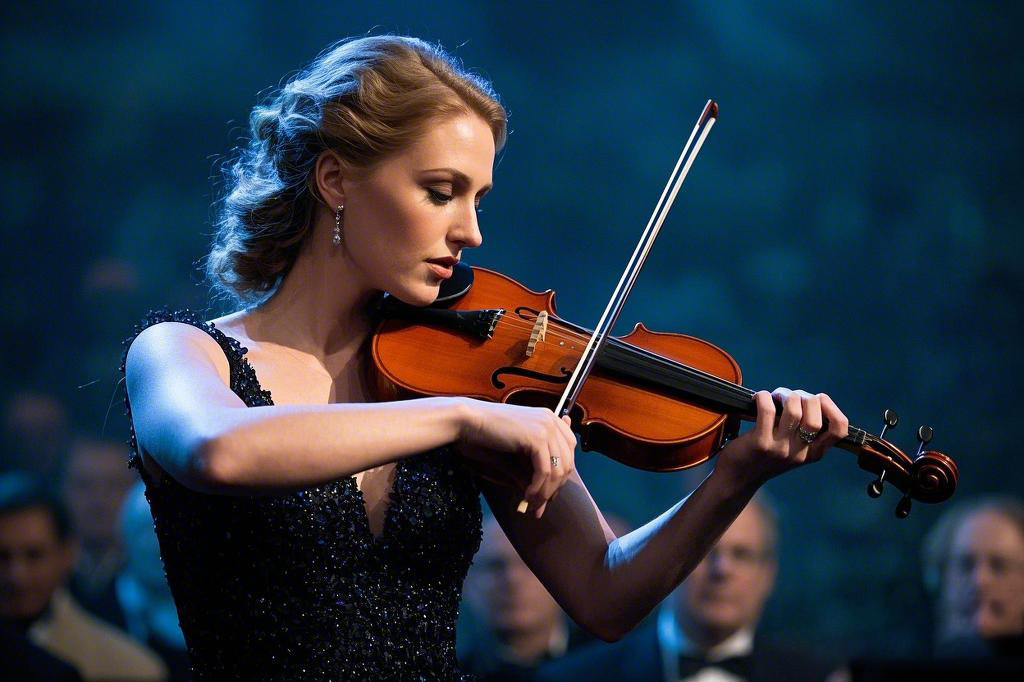ABRSM Violin Grade 1 Essential Repertoire to Learn
Shang Kun 2025-10-25 30
Unlocking the Potential: Mastering ABRSM Violin Grade 1 RepertoireEmbarking on the journey of mastering the violin is akin to exploring a vast, enchanting forest—full of hidden gems and unexpected challenges. For those who have just begun their adventure, the ABRSM (Associated Board of the Royal Schools of Music) Grade 1 exam stands as a significant milestone, marking the first step towards a world of musical mastery. This article delves into the essential repertoire that every budding violinist should learn to excel in their Grade 1 ABRSM exam, providing insights, tips, and strategies to help you navigate this exciting musical landscape.
Understanding the ABRSM Grade 1 Exam StructureThe ABRSM Grade 1 exam is designed to assess a violinist's foundational skills, including their ability to play scales, perform pieces from the prescribed list, and demonstrate their understanding of basic music theory. The exam is divided into three sections: Scales and arpeggios, three pieces, and sight-reading. Each section is crucial in evaluating a student's progress and potential for growth in their musical journey.
Scales and Arpeggios: Building a Solid FoundationScales and arpeggios are the building blocks of any musician's technique. For Grade 1, students are expected to play major and minor scales, as well as arpeggios, in different positions and keys. Practicing these regularly not only improves finger dexterity but also enhances a student's understanding of music theory. It's essential to approach this section with patience and consistency, as it lays the groundwork for more complex pieces in the future.
The Prescribed Pieces: A Gateway to Musical ExpressionThe prescribed pieces for Grade 1 are carefully selected to introduce students to a variety of musical styles and techniques. These pieces are not just about playing the right notes; they are about expressing the emotions and stories behind the music. Here are some of the essential pieces that every Grade 1 violinist should learn:
1. "The Little Swan" by C. Saint-SaënsThis charming piece from "Carnival of the Animals" is a delightful introduction to the world of classical music. Its gentle melody and simple harmonies make it an excellent choice for beginners to practice bow control and phrasing.
2. "Twinkle, Twinkle, Little Star"A classic that every musician knows, "Twinkle, Twinkle, Little Star" is a great way to practice rhythm and intonation. It's a fun piece that can be played in various keys, providing a solid foundation for understanding key signatures and transposition.

3. "Bourrée" from Handel's "Suite in D minor"This lively piece is a fantastic way to introduce students to the world of baroque music. Its repetitive pattern and rhythmic bounce make it an excellent exercise in bowing techniques and articulation.
Sight-Reading: Enhancing Musical LiteracySight-reading is a crucial skill that tests a student's ability to read and play music at sight. It's not just about playing the right notes; it's about understanding the music's structure and making informed decisions about phrasing and dynamics. Regular sight-reading practice is essential for developing this skill, which will serve violinists well throughout their musical careers.
Technique and Practice Tips for Grade 1 ViolinistsMastering the violin is a journey that requires dedication, patience, and the right approach. Here are some tips to help Grade 1 violinists practice effectively:
1. Consistent PracticeRegular practice is the key to progress. Set aside time each day to practice, even if it's just a few minutes. Consistency is more important than the length of practice sessions.
2. Break It DownWhen learning a new piece, break it down into smaller sections. Focus on mastering one section at a time before moving on to the next. This methodical approach helps build confidence and ensures that each part is played correctly.
3. Use a MetronomeA metronome is an invaluable tool for developing rhythm and timing. Start slow and gradually increase the tempo as you become more comfortable with the piece.
4. Listen and LearnListening to professional recordings of the pieces you're learning can provide valuable insights into interpretation and style. Try to emulate the phrasing and dynamics you hear in these performances.
5. Seek FeedbackRegular
